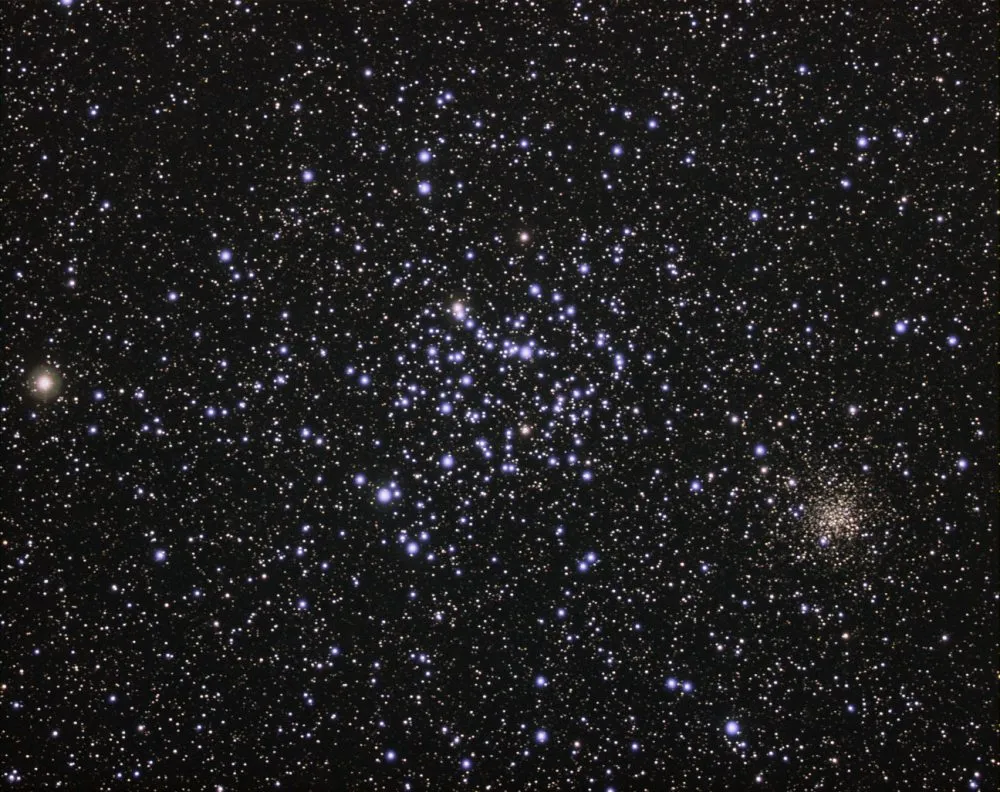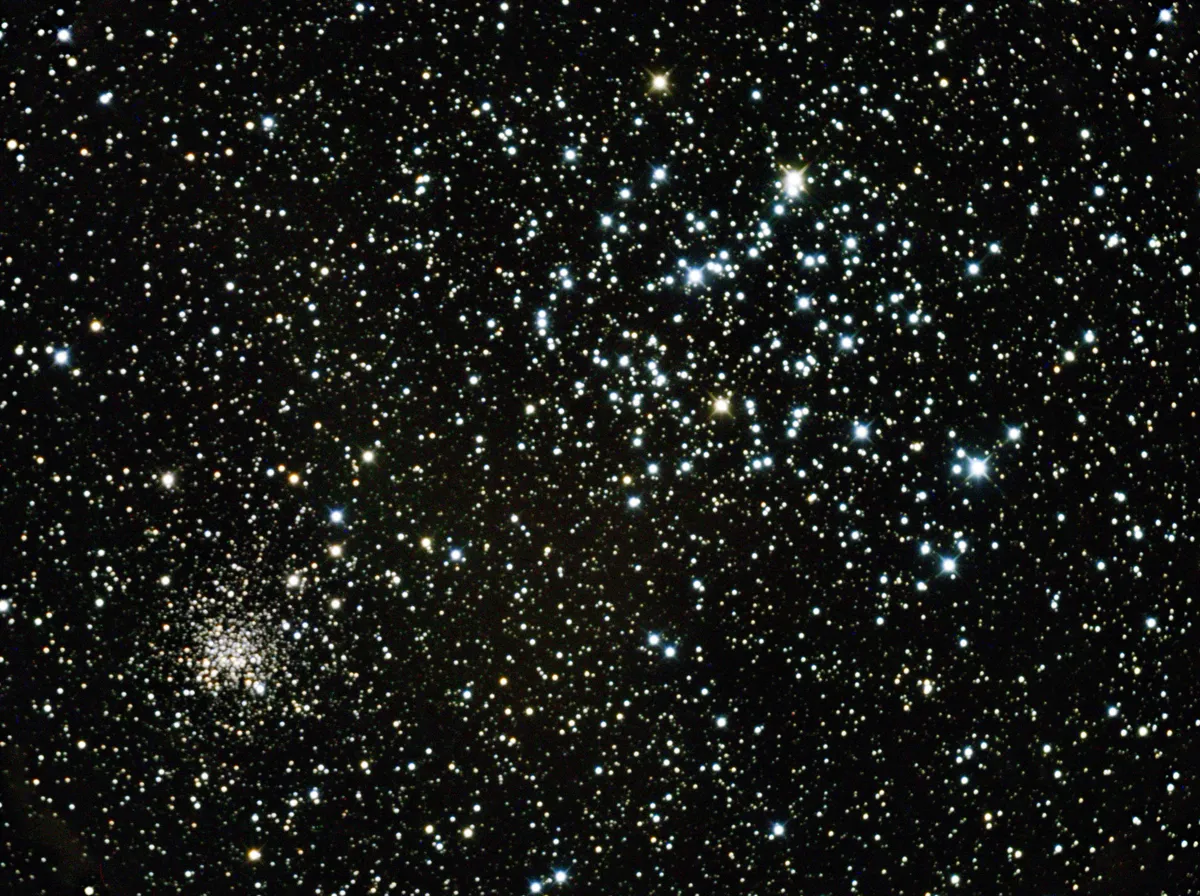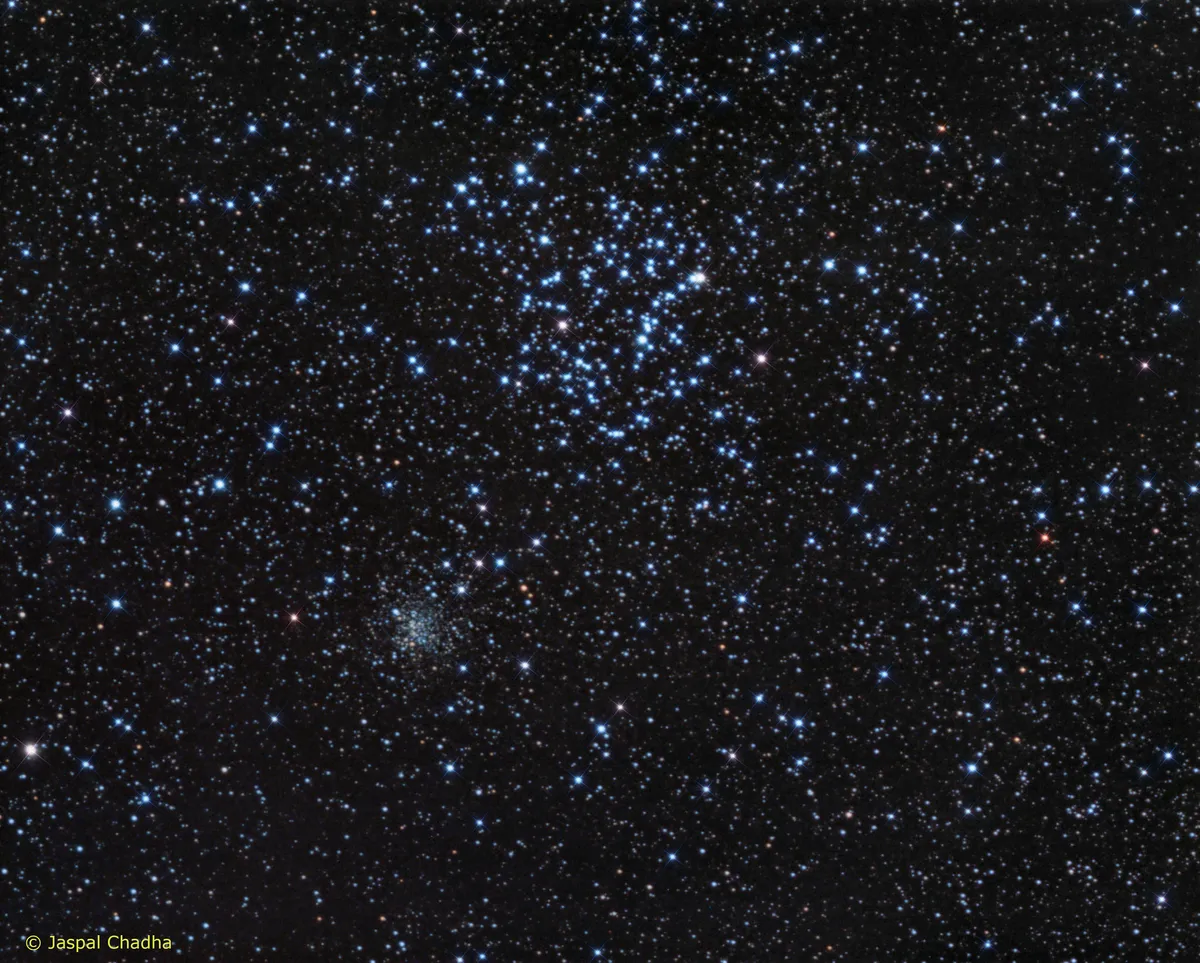Messier 35 is a large open star cluster 2,800 light-years away that can be seen near Castor's right foot in the constellation Gemini.
M35 - or NGC 2168 as it’s also known - probably contains about 500 stars, and is thought to be about 100 million years old. This might seem very old, but it is relatively young in astronomical terms.
Open star clusters are indeed young objects, generally speaking, especially when compared to globular clusters, which can be as ancient as 12 billion years old.

Messier 35 shines at mag. 5.2, which means it can be seen with the naked eye under dark conditions, but viewing through binoculars or even a small telescope will begin to reveal its sparkling beauty.
The cluster is part of the famous Messier Catalogue conceived by Charles Messier in the 18th century, but it is the only Messier object in the Gemini constellation.
Find it high in the sky during winter months, near Taurus, Auriga and Orion. For more info on locating Messier 35, read our guide to the best Christmas astronomy targets written by Br. Guy Consolmagno, Director of the Vatican Observatory.
NGC 2158

M35 is often captured by astrophotographers along with NGC 2158, another open star cluster that appears much smaller and more compact.
NGC 2158 is also located in Gemini and looks as thought it's right beside M35, but in actual fact it is much further away, at 14,700 lightyears distant.
NGC 2158 is also much older, at 2 billion years old.
The contrasting shapes and densities of M35 and NGC 2158 when viewed from Earth make them great pair to photograph, as our selection of images captured by BBC Sky at Night Magazine readers and astrophotographers shows.
For more info on imaging the deep sky, read our guide to deep-sky astrophotography or discover our pick of the best astrophotography cameras.
And don’t forget to send us your images or share them with us via Facebook, Twitter and Instagram.



